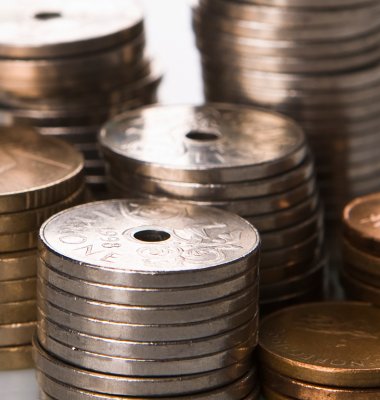The Producer Price Index (PPI) measures price developments in manufacturing, extraction of oil and gas, electricity supply and mining, both in terms of sales to the Norwegian market and abroad. In this article, we mainly focus on the manufacturing industries. Key Norwegian manufacturing industries include the food industry, chemical production, petroleum and coal processing, and basic metal manufacturing.
The producer price index (PPI) measures the price development that important parts of the Norwegian industry receive for their goods. Compared with the more well-known consumer price index (CPI), PPI measures price developments at an earlier point in the value chain. The CPI measures the price development that households pay for different goods, while the PPI measures prices "at the factory gate". Thus, PPI is an important indicator of the condition in the Norwegian industry. The index is used to analyse the Norwegian economy and can also be an indication of the development in the CPI. The PPI measures the price development in extraction of oil and natural gas, manufacturing, water- and electricity supply and for certain services, including services related to oil and gas extraction. Prices are measured on goods sold in the first stage of sales from the producer to the Norwegian market (domestic market), in addition to the foreign market (export market).
Lower price growth on exported manufactured goods
In the export market, prices fell by 0.7 percent compared with November last year, against a slight price increase from October 2024 to October 2025.
The manufacturing industry that contributed most to pull down export prices in November was within refined petroleum products where prices have dropped sharply compared with November last year. The price decrease was close to 24 percent, and not since August 2023 has there been a more negative twelve-month growth for this industry.
Another industry with decreasing export prices was the mineral product industry. Prices on exported basic metals also fell from November 2024 to November 2025, by 3.4 percent.
As in previous months, domestic market prices rose more than those on the export market during the last twelve-month period.
– Since autumn last year and until April this year, the price growth of exported manufactured goods has been significantly higher than for goods sold domestically. However, by April the gap had almost disappeared, and during the last seven months, the twelve-month growth rate has been higher on the domestic market than on the export market, says Espen Kristiansen, head of section at Statistics Norway.
Prices of industrial goods sold to the Norwegian market increased by a total of 3.0 percent from November last year to the same month this year. This was a slightly larger twelve-month growth than in October, when it was 2.8 percent.
Sustained growth in Norwegian seafood export prices
The most important industry that mitigated the price decline in exported industrial goods was the food industry, where especially exported fish played a significant role, with a price increase of around 18 percent from November last year to this year. In the last month, fish prices in the export market rose by 4.2 percent. The sharp price increase in exported fish contributed to an overall price increase of 14.4 percent of exported food in the last twelve-month period.
Prices in basic metals on the export market increased again from November last year to this year, in contrast to the previous six months where prices fell compared to the same month the year before.
Export prices show larger fluctuations than domestic prices
It is common that prices of exported industrial goods fluctuate more, both up and down, than goods sold domestically. This is partly because exported goods are different from those sold to the Norwegian market. Several export goods fluctuate significatly with conditions in global commodity markets, In addition, they are affected by changes in the exchange rate. In the past six months, export prices have fluctuated slightly upwards again, although they are still lower than a year ago.
As we can see in Figure 2, it is not uncommon to have large fluctuations in the twelve-month growth for several of the mentioned industries in the export market.
Moderate increase in imported food prices
Statistics Norway's price index of first hand domestic sales (PIF) shows price changes for imported goods as well as price changes on goods sold to the domestic market, including food products.
Throughout most of 2023, there were high twelve-month rates on imported food, with price increases between 12 and 22 percent. In February 2024, the twelve-month rate fell to just under 3 per cent.
– From July last year to this summer, the price growth of imported food picked up again, but since June, it has eased significantly, says Espen Kristiansen, head of section at Statistics Norway.
Prices of imported food products increased by 3.5 percent from November last year to this year, slightly down from the previous twelve-month period. It was the product group of coffee, tea, cocoa, and spices that contributed most to the overall price increase, where prices rose by almost 27 percent.
In the domestic market, food prices rose by 3.8 percent, helped by higher prices for various fish products. From November last year to November this year, fish prices increased by 5.2 percent.
Other important twelve-month changes
- The price index for extraction of crude oil and natural gas fell by approximately 26 percent from November last year to November this year, contributing to an overall decline in PPI prices by close to 8,0 percent during the same period.
- Prices in the power supply sector, which includes electricity and its distribution, rose by approximately 56 percent from November last year to November this year.
